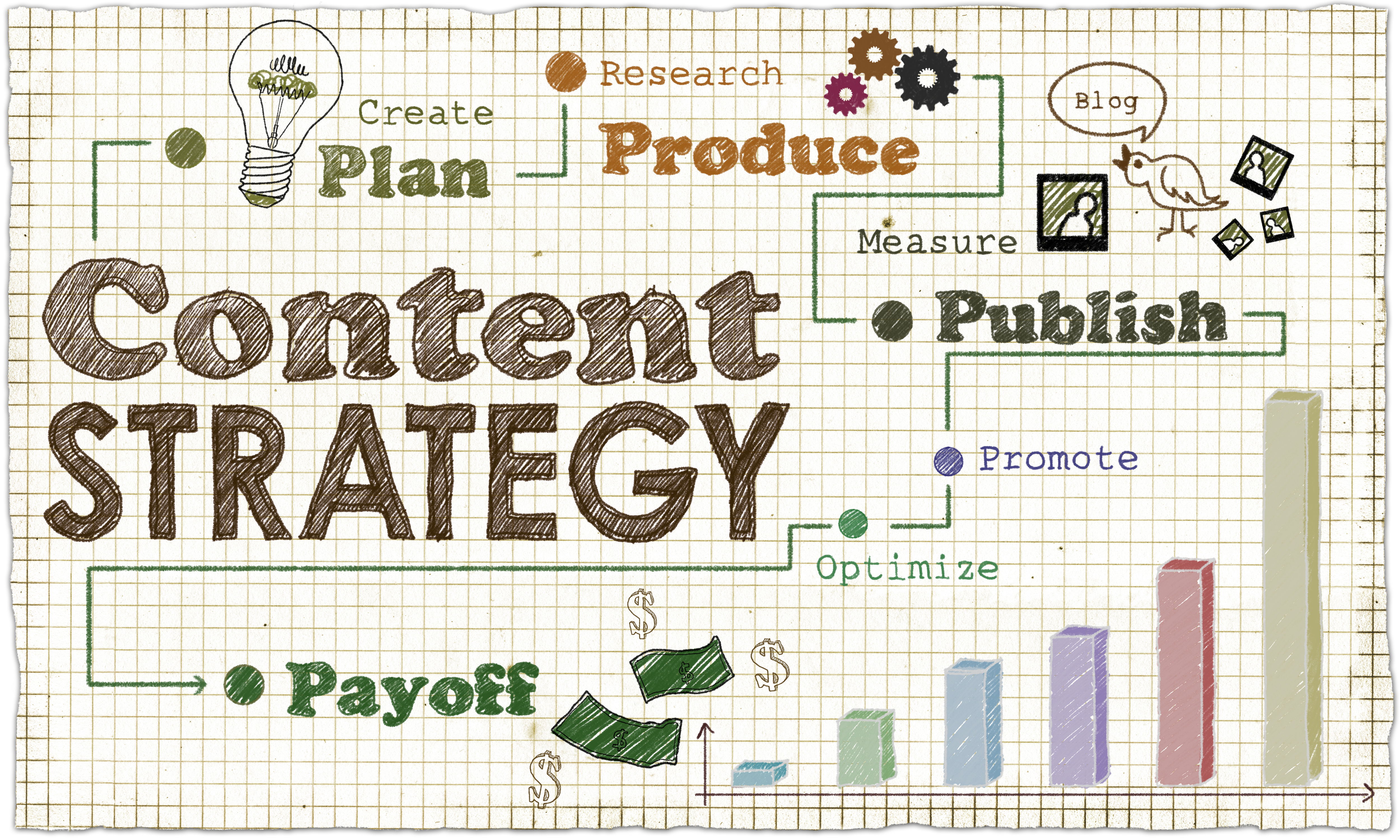One Decision That Defines Your Brand
“To do or not to do marketing—that is the question.” In today’s fast-paced, digitally-driven world, the decision to engage in marketing can feel as weighty as Shakespeare’s famous soliloquy.
On one hand, marketing is essential to growing your brand, reaching your audience, and driving sales.
On the other, the sheer volume of marketing messages consumers encounter daily makes it easy to get lost in the noise—or worse, to make the wrong impression.
The truth is, deciding whether or not to invest in marketing is only half the battle. The real challenge lies in how you approach it. Poorly executed marketing can damage your credibility, waste resources, and alienate your audience.
On the flip side, a strategic, thoughtful approach can transform your brand into a trusted, recognizable leader in your industry.
So, is it better to do marketing for the sake of doing it—or to take a pause, reflect, and do it the right way?
This blog explores the risks and rewards of both paths and offers insights to help you make the best decision for your business. Let’s dive in.
Section 1: The Case for Doing Marketing
In a world where consumers are bombarded with choices, marketing is not just an option—it’s a necessity.
Whether you’re a small business or a global brand, marketing serves as the bridge between your products or services and the audience that needs them. It’s the way businesses tell their story, solve problems for their customers, and ultimately, build meaningful connections.

Here are some of the compelling reasons why marketing is essential:
1. Builds Brand Awareness
Without marketing, even the most groundbreaking product remains unknown. Marketing puts your brand in front of the right audience, ensuring they recognize your logo, remember your name, and associate your business with their needs.
From social media campaigns to targeted ads, the tools available today make it easier than ever to make your presence known.
2. Drives Engagement and Sales
Engagement is the first step toward conversion. Effective marketing creates touchpoints where customers can interact with your brand—whether it’s a click on an email, a comment on a social media post, or a visit to your website.
Each interaction strengthens the relationship, making it more likely that they’ll choose your business when the time comes to buy.
3. Establishes Credibility
People trust businesses that communicate consistently and professionally. Marketing helps you share your expertise, showcase testimonials, and highlight your achievements, building trust with your audience.
A well-maintained online presence, complete with valuable content, signals that you’re a credible and reliable choice in your industry.

4. Enables Growth and Adaptability
Marketing isn’t just about maintaining the status quo—it’s about growth. Businesses that invest in marketing can reach new demographics, adapt to changing trends, and explore untapped markets.
It’s a vital tool for scaling operations and staying relevant in an ever-evolving marketplace.
5. Levels the Playing Field
Even small businesses can compete with larger competitors through smart marketing. With digital tools and targeted strategies, the barriers to entry are lower than ever.
The right campaign can position your brand alongside industry leaders, creating opportunities that wouldn’t exist without marketing.
Examples of Marketing Success
Consider brands like Nike, which has built an empire not just on its products but on its storytelling. From “Just Do It” to its collaborations with athletes and communities, Nike’s marketing is as iconic as its products.
Similarly, local businesses leveraging targeted social media ads or email campaigns have seen dramatic increases in foot traffic and online sales. These examples demonstrate that the ROI of well-executed marketing is undeniable.

When done right, marketing doesn’t just attract customers—it creates a lasting impression that keeps them coming back. It’s the difference between being another face in the crowd and becoming a brand that customers know, love, and trust.
In the next section, we’ll explore why marketing done poorly can be just as damaging as no marketing at all.
Section 2: The Dangers of Poor Marketing
While marketing is essential for business growth, executing it poorly can do more harm than good.
Ineffective or misguided marketing efforts can not only waste valuable resources but also damage your brand's reputation and alienate your target audience.
1. Damages Brand Reputation
Poor marketing can lead to inconsistent messaging, unprofessional appearances, or even offensive content.
This can erode trust and credibility, making customers less likely to engage with your brand. In today's digital age, negative impressions can spread rapidly through social media and online reviews, making it even more crucial to maintain a positive image.
2. Wastes Resources
Investing time and money into poorly planned marketing campaigns drains resources without delivering results.
This includes costs associated with creating content, purchasing advertising space, or utilizing marketing tools that don't align with your goals.
Inefficient spending not only affects your bottom line but also limits your ability to invest in more effective strategies.
3. Misses the Target Audience
Marketing efforts that don't resonate with your intended audience can fall flat. If you don't understand who your customers are, what they need, or where they spend their time, your messages may never reach them.
This disconnect leads to low engagement rates and missed opportunities for conversions.

4. Creates Customer Confusion
Inconsistent branding or unclear messaging can confuse potential customers about what your business offers.
If your marketing doesn't clearly communicate your value proposition, customers may turn to competitors who present a more straightforward message.
Confusion can also arise from overcomplicating your content or using industry jargon that your audience doesn't understand.
5. Negative Return on Investment (ROI)
Marketing that doesn't deliver results ultimately leads to a negative ROI. This not only affects immediate sales but can also impact long-term business growth.
A series of unsuccessful campaigns can strain your marketing budget and lead to skepticism about the effectiveness of future marketing endeavors.
6. Alienates Potential Customers
Insensitive or inappropriate marketing content can offend or alienate segments of your audience. This includes failing to consider cultural differences, using humor in poor taste, or not being inclusive.
Such missteps can lead to public backlash and a loss of customer trust.

Examples of Marketing Missteps
- Pepsi's 2017 Ad Campaign: Pepsi released an advertisement intended to promote unity but was criticized for trivializing social justice movements. The backlash was swift, leading the company to pull the ad and issue a public apology.
- Gap's Logo Redesign: In 2010, Gap unveiled a new logo without engaging its customer base. The negative response was so overwhelming that the company reverted to its original logo within a week, highlighting the risks of making significant changes without customer input.
- Local Business Spam Emails: Many small businesses resort to generic, spammy email blasts that alienate their audience instead of nurturing relationships.
These examples illustrate how poor marketing decisions can lead to public relations crises, financial losses, and long-term damage to a brand's image.
Turning Poor Marketing Around
The good news? Poor marketing isn’t a permanent failure—it’s a learning opportunity. By stepping back, reassessing your goals, and investing in strategic planning, you can turn ineffective campaigns into meaningful connections with your audience.

Poorly executed marketing doesn't just fail to attract new customers; it can actively drive them away.
It emphasizes the importance of thoughtful planning, understanding your audience, and aligning your marketing efforts with your brand's values and goals.
In the next section, we'll explore how adopting a strategic approach to marketing can help you avoid these pitfalls and set your business on a path to success.
Section 3: The Middle Ground – Strategic Marketing
The choice between doing marketing poorly and not doing it at all might seem like a lose-lose scenario.
But there’s a third option that every business should strive for: strategic marketing.
It’s not about marketing more or less—it’s about marketing smarter. Strategic marketing ensures that your efforts are intentional, impactful, and aligned with your goals.

1. Focus on Strategy Before Execution
Every successful marketing campaign starts with a clear strategy. Before creating content or running ads, ask yourself:
- Who is my audience?
- What problem am I solving for them?
- Where are they most likely to engage with my brand?
Having answers to these questions allows you to tailor your marketing efforts to resonate with the right people at the right time. Strategy eliminates guesswork and lays the foundation for consistent, measurable results.

2. Understand Your Audience Deeply
Strategic marketing isn’t just about broadcasting your message; it’s about creating a dialogue.
Take the time to understand your audience’s needs, preferences, and pain points. Leverage tools like surveys, social media analytics, and customer feedback to gain insights.
When your audience feels heard and understood, they’re more likely to engage and stay loyal to your brand.

3. Invest in Quality Over Quantity
The pressure to constantly produce content can lead to burnout—and subpar results. Strategic marketing prioritizes quality over quantity.
A single, well-crafted blog post or ad campaign that speaks directly to your audience’s needs can outperform a flood of generic, uninspired content. Focus on creating value-driven materials that leave a lasting impression.

4. Leverage Data to Drive Decisions
Data is the backbone of strategic marketing. It helps you track what’s working and what isn’t, allowing you to adjust your approach in real-time.
Use analytics to measure engagement, conversion rates, and ROI for your campaigns. Strategic marketers don’t rely on luck—they rely on data.

5. Build Consistency Across Channels
Consistency is key to building trust and recognition. Strategic marketing ensures that your messaging, tone, and visuals are aligned across all platforms—whether it’s your website, social media, or email campaigns.
This unified approach strengthens your brand identity and makes it easier for customers to connect with you.

6. Adapt and Evolve with Trends
The marketing landscape is constantly changing. Strategic marketers stay ahead of the curve by monitoring industry trends, experimenting with new tools, and learning from competitors.
Being adaptable ensures that your marketing remains relevant and effective.

Examples of Strategic Marketing in Action
- Spotify Wrapped: Spotify’s annual personalized Wrapped feature taps into user data to create highly shareable content, fostering engagement and loyalty while promoting the brand.
- Dove’s Real Beauty Campaign: Dove built a movement by addressing societal issues around beauty standards, creating an emotional connection with their audience.
- Slack’s Targeted Approach: Slack initially targeted a niche audience of tech teams, positioning itself as the solution for workplace communication. By focusing on a specific pain point, it grew into a billion-dollar brand.
Why Strategic Marketing Matters
Strategic marketing bridges the gap between doing too much and doing nothing at all. It ensures that every dollar, post, or ad you create serves a purpose, engages your audience, and delivers measurable results.
It’s not about perfection—it’s about progress, refinement, and staying aligned with your brand’s vision.
In the next section, we’ll explore what happens when businesses choose not to market at all and why that’s a risk you can’t afford to take.
Section 4: What Happens When You Don’t Market at All
Imagine having the best product or service in the world but no one knows it exists. That’s the harsh reality for businesses that choose not to market at all.
While avoiding marketing might seem like a way to save resources or avoid potential missteps, the cost of inaction is often far greater than the risks of doing it wrong.

1. You Become Invisible to Your Audience
In today’s crowded marketplace, customers are inundated with options at every turn. If your business isn’t actively putting itself out there, it’s unlikely to cross their radar.
Out of sight truly is out of mind, and without marketing, your competitors will gladly step in to claim the attention you’re missing.

2. Missed Opportunities for Growth
Marketing is the engine that drives business growth. Without it, you miss out on:
- Expanding your customer base.
- Building relationships with potential partners.
- Entering new markets or industries.
Every missed opportunity compounds over time, making it harder to compete and stay relevant.

3. The Risk of Losing to Competitors
Your competitors are marketing. They’re building their brand, engaging with customers, and securing market share.
By not marketing, you’re ceding the playing field to them, giving them a head start in winning over customers who could have been yours.

4. Stagnation Becomes the Norm
Without marketing, businesses often fall into stagnation. Sales plateau, customer bases shrink, and brand awareness fades.
Over time, this lack of momentum can lead to dwindling revenues, leaving your business vulnerable to financial challenges and even closure.

5. Fewer Customer Touchpoints
Marketing creates opportunities for your audience to connect with your brand. Whether it’s a social media post, an email campaign, or an in-person event, each touchpoint strengthens your relationship with your customers.
Without marketing, these interactions simply don’t happen, leaving your audience disconnected and disengaged.

6. Limited Feedback and Adaptation
Marketing isn’t just about promoting your business—it’s also a way to gather feedback. Campaign performance, customer reviews, and engagement metrics provide invaluable insights into what your audience wants and needs.
Without these data points, it becomes much harder to adapt and improve your offerings.

Examples of Businesses That Fell Behind
- Blockbuster: While Netflix embraced digital marketing and the rise of streaming, Blockbuster stuck to traditional methods, ultimately becoming irrelevant.
- Sears: Once a retail giant, Sears failed to adapt its marketing strategy for e-commerce, leading to a steady decline in relevance and sales.
- Kodak: Despite inventing the digital camera, Kodak’s marketing didn’t pivot to emphasize digital photography, leading to its downfall in the face of competitors like Canon and Sony.
Why Marketing is Non-Negotiable
Marketing is the lifeline of any business. Without it, you risk being forgotten by your audience, losing to competitors, and stagnating in an ever-changing marketplace.
Even small-scale, low-budget marketing efforts can make a significant difference. It’s not about doing everything—it’s about doing something.
Choosing not to market is, in essence, choosing to stay silent in a room full of voices. And in business, silence isn’t golden—it’s costly. In the final section, we’ll explore how to strike the right balance and make marketing work for your business without overextending your resources.

Conclusion: To Do Marketing the Right Way
When it comes to marketing, the question isn’t simply “to do or not to do”—it’s how to do it right. Marketing is the lifeblood of any business, but its success depends on thoughtful planning, execution, and a clear understanding of your audience and goals.
Poorly executed marketing can harm your brand, while avoiding it altogether can render you invisible in a competitive marketplace.
The sweet spot lies in strategic marketing—a purposeful, data-driven approach that prioritizes quality over quantity, aligns with your brand values, and creates meaningful connections with your audience. So, where do you go from here?
- Evaluate Your Current Efforts: Take an honest look at your current marketing strategy. Are you consistent? Are you reaching the right audience?
- Start with Strategy: Define your goals, target audience, and key messages before diving into campaigns.
- Focus on Quality: Create content and campaigns that genuinely resonate with your audience. Even a single, well-crafted effort can outperform a flurry of low-impact attempts.
- Commit to Continuous Improvement: Use data to refine your approach, learn from mistakes, and stay ahead of trends.
Remember, marketing isn’t just about making noise—it’s about making an impact. By choosing to do marketing the right way, you can position your business as a trusted, credible brand that stands out in even the most crowded spaces.
The decision to market is ultimately the decision to grow. So, will you take the next step to ensure your marketing not only works but works smart? The choice is yours.
We’d love to hear your thoughts!
Share your feedback on this blog post by leaving a comment below.
"Feeling overwhelmed with marketing?
Let us take the stress off your plate!"
"Reclaim your valuable time with SocialMedia Beyond's SMB Strategies."
Try it today and elevate your marketing!
Ready to level up your marketing?
Contact us today to connect with a ROC Specialist and start your marketing strategy!